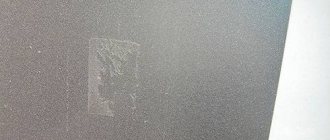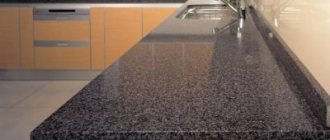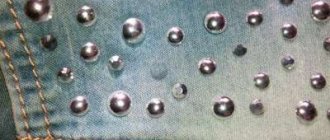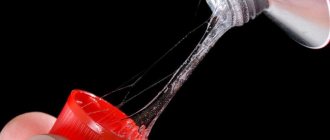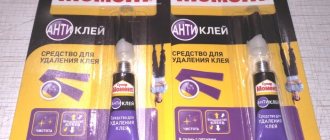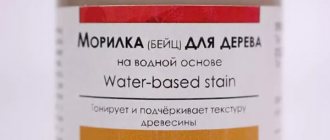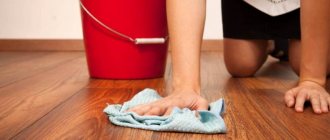How to remove hot melt glue? If you use thermoplastic glue (hotmelt glue), no matter how carefully you use it, sooner or later you will still accidentally drip melted glue onto your clothes. Is there a way to remove hot melt glue from clothing without damaging the fabric?
Hot-melt adhesive in its normal state is a solid substance. Since it is applied in a molten liquid state, it can penetrate through the threads of the fabric before it hardens. The deep penetration of hot-melt adhesive into the fabric structure makes it difficult to remove. There are several ways to remove hot melt glue from fabric. It may take you a few tries to find the right solution for your specific fabric type.
Advantages of hot-melt adhesive and its types
The thermal composition does not need to be mixed before application and is easy to store after use. It has a long shelf life. Such compositions have good adhesion to any surface. After application, they form a dense, durable seam, connecting different structures into one.
Hot melt adhesive is used to join the following materials:
- paper of various densities, including cardboard;
- almost all types of plastics;
- glass;
- metal surfaces;
- wood;
- fabrics and others.
Hot-melt adhesive has low consumption, there is no need to clean the tool, the glue gun allows you to carry out work accurately. But sometimes its traces remain where they are not expected at all: on the floor, clothes, skin, equipment.
There are special compounds for removing hot-melt adhesive. To do this, it is important to follow the recommendations on the packaging. Before choosing a glue remover, you should clarify what substance it is based on.
There are several types of hot melt adhesive:
- polyamide;
- EVA or ethylene vinyl acetate;
- polyester;
- polyolefin;
- silicone based;
- based on rubber (synthetic);
- reactive polyurethane.
Each material has its own physical and chemical characteristics and is dissolved in different solvents. Most glue sticks are dissolved by acids and alkalis. But these aggressive substances can damage or even destroy the bonded surfaces. There are funds for building materials, but with hot-melt adhesive you will need a lot of them, and the process itself will take quite a lot of time.
Hot-melt adhesives are hazardous to health if the room is poorly ventilated during operation. You can get burns to your respiratory tract.
How to clean a glue gun yourself
The use of a hot glue gun is not limited to repairs or construction - it has long been adopted by handicraft industry craftswomen and parents making fakes with children. A fast, safe and effective tool, it greatly facilitates many tasks, but only until it becomes clogged with the remains of dried glue.
Rules for cleaning the heat gun
In order for a tool to work for a long time and properly, it must be chosen wisely. In addition to the fact that you don’t need to buy a cheap hot-melt gun, you also need to carefully monitor the quality of the glue you buy. At the time of work, you must follow the instructions of the manufacturer of the tool and glue. From time to time, the instrument will need preventive measures, and sometimes deep cleaning. It is important to understand one thing - completely clearing the inside of the gun nozzle of glue is impossible and even useless. The nozzle is cylindrical and made of solid metal, so excess glue simply dries there until the next heating. But there are ways to do a safe surface cleaning:
- After finishing using the glue gun, you need to wipe off the excess glue flowing out of the nozzle;
- If too much hardened glue has accumulated inside, you need to turn on the gun and point its nozzle down. As it heats up, the glue will flow out and can be wiped off with a rag;
- You can moisten a cotton swab with ethyl alcohol, soak the remaining glue in the nozzle and try to remove it;
- It's risky, but you can try to clean off these residues with the tip of a knife. However, in this case there is a risk of scratching the metal nozzle or damaging the plastic case.
Often, pistol manufacturers also produce adhesive compounds on their own - it is better to opt for them.
From fabric
Liquid cleaner works great for most types of hot melt adhesive. It can be removed by soaking a cotton pad in this liquid and applying it to the seam. After a few minutes, the glue can be removed with a dry cloth. This method has proven its effectiveness many times.
Isopropyl alcohol, available at hardware stores, may help. Before wiping off the glue, it is worth testing its effect on a small area in an inconspicuous place (seams, hem on the wrong side). To clean hot melt adhesive, you can use the following procedure:
- Shake the container well, mix all the layers;
- apply a small amount of the composition to the seam (using a cloth or spraying);
- Allow the chemical reaction to take place for a few minutes (no vapors or other manifestations);
- wipe the seam with a damp cloth;
- if the result is not good enough, the entire procedure should be repeated.
Isopropyl alcohol has a moderate level of toxicity and is a flammable liquid. Prolonged inhalation of its vapors can cause poisoning and dizziness. The substance requires careful handling.
Gasoline, acetone or white spirit can also dissolve the glue, but it will take some effort and time to remove all the adhesive. These substances can damage bonded surfaces.
If the glue is completely dry, you can dilute vinegar in a ratio of 1 tablespoon to a liter of clean water. Soak the item in liquid for 40-60 minutes. Then wash the item in hot water with soap and stain remover.
Hot melt adhesive: removal methods - DRIVE2
How to remove hot melt glue? How to dissolve hot melt glue?
(
Hot-melt adhesive is the one in glue guns
) Such questions arose when I was gluing the mesh with hot-melt adhesive to the plastic of the car, looking for an escape route, so to speak. I don’t know how it is or what, there is very little information about this on the Internet (maybe you have other information?), all that I have found are tedious and time-consuming methods, but effective, and definitely worthy of attention, so I will write everything here on the blog. I tested everything described at home, gluing the stains to a plastic column.
Methods for removing hot melt adhesive:
1.
Heat
.
(a construction or regular hairdryer, a soldering iron, matches... whatever). 1.1. Wipe the heated glue with paper or cloth 1.2. You can attach paper to the glue and iron it, this way it’s easy to remove the glue from the carpet, but I don’t recommend this method, it won’t evaporate everything completely. 2. Isopropyl alcohol
!
The best way! This alcohol peels off glue from any surface. I would like to note that ordinary alcohol will not work here, it is 20 times weaker than isopropyl alcohol (you really won’t notice the difference between tearing off the glue with just your hands, and after wetting it with drinking alcohol, with isopropyl alcohol it’s a completely different matter). Isopropyl alcohol can be used to remove glue from carpet, metal, wood, anything in short. It doesn't come off instantly, but it comes off much easier. 3. Gasoline galoshes, gasoline galoshes
.
Excellent solvent for hot melt adhesive. It acts on him much like water does on soap. It dissolves it, and when it dries, the hot melt glue hardens back. But it becomes even more difficult to remove the glue from the surface, as it also becomes slippery. You can simply wipe it off like a stain of dirt. I want to warn you that this gasoline stinks very strongly, you cannot use it at home. The smell is difficult to dissipate. 4. White spirit
, the same as gasoline-galoshes, they seem to me to be equal in dissolution power, although galoshes may dissolve better.
5. freezing
, I froze the glue in the freezer, and immediately tried to break it, it cracked slightly and that’s it, it was already hot from my fingers.
Perhaps at -60 this is a good way, but in everyday conditions it is useless advice. 6. Acetone
perfectly dissolves hot-melt adhesive, and will also dissolve car paintwork, which is why it was immediately discarded.
The action is similar to gasoline galoshes, it actually dissolves it. 7. Other solvents
, gasoline, solvent 647, should also dissolve hot-melt glue, but 647 is an analogue of acetone, it will also dissolve varnish, and I didn’t have gasoline on hand to try.
This video inspired me:
In practice, everything is a little worse, but it really works! www.drive2.ru
From knitted jersey
Some types of hot melt adhesive are not resistant to negative temperatures. This should be indicated in the instructions for use. It is necessary to wait until the glue has completely dried, and only then begin to remove it from a hat, sweater or other knitted fabric. When hot, the glue dries very quickly, but at sub-zero temperatures it becomes brittle and can be removed from the surface very well.
Place the stained fabric in the freezer until the glue freezes completely and becomes brittle. Then, using a spoon or other hard object, the glue crumbles and is easily removed from the fabric. After this, it is recommended to wash and rinse the item.
Heat
Separating and cleaning parts can be done using the same process as gluing - heating. When heated, the hot-melt adhesive softens and the surfaces are easily separated. You can remove glue residue from surfaces using a rag, rags, or scraper. However, it is most likely impossible to completely remove liquid glue from a fluffy, porous base.
It is impossible to properly clean clothes, carpet, wood in this way. In addition, there is a risk of surface damage.
Heating can be done using a hair dryer, a hand-held gas torch, an iron or another safe method.
Cleaning traces of rhinestones
Rhinestones are usually glued to jeans with hot glue and it is very difficult to remove. On the fabric, when decorative elements fall off, gray-yellowish spots remain, which spoil the appearance of the clothing. This problem can be solved in different ways.
Place the jeans on the ironing board and lay a cloth or napkin over them. Then use the hot sole of the iron to go over the areas with glue. At high temperatures, the glue will begin to melt and stick to the napkin.
Glue stains can be removed from white clothes with solvent or nail polish remover. This method is only suitable for white and light-colored fabrics; colored fabrics should not be processed using this method, as the paint can be damaged.
How to dissolve hot melt glue?
Timely cleaning of equipment helps to avoid a number of problems, such as equipment failure, deterioration in the quality of finished products, disruption of the stable operation of the line, unpleasant odors of burning and smoke in the room, etc. Cleaning must also be done when switching from one type of glue to another.
If we discard all the popular advice on “how to remove hot-melt adhesive” by freezing, rubbing with acetone, oils, etc., we are left with the use of two main types of cleaners – cold and hot. Each is required to remove hot melt adhesive from specific areas of equipment and should be used accordingly.
Henkel hot and cold adhesive cleaners are discussed in detail in the video - “Make your production process safer with hot melt adhesive cleaners”:
For cold application
Cold cleaners are used to remove hot-melt adhesive from the external surfaces of equipment. They are produced in the form of liquids in bottles, canisters or cans. Apply at room temperature by spraying or using a rag. These products can be used to clean adhesive residue from horizontal, inclined and vertical parts.
Before use, cleaners must be checked for compatibility with surface materials. They should not be sprayed near open fires or allowed to come into contact with hot objects as the flash point is 40-50°C. To protect your hands and respiratory organs, it is advisable to wear gloves and a mask before carrying out work.
For hot application
Hot cleaners are needed to remove contaminants on the internal surfaces of equipment components - heating chambers, hoses, nozzles, etc. They are often produced in granules, but also come in the form of liquids.
From the carpet
Place a cloth or paper napkin on the glue stain. When hot, the adhesive composition is well absorbed from the surface of the carpet. Using a heated iron at medium power, press the area of the stained area.
The iron should fit snugly to the fabric. You cannot move it back and forth, otherwise the problem will only worsen. This will only spread the glue further across the carpet, causing the stain to spread over a larger area.
It is better to use rubber or disposable gloves to avoid getting your hands dirty. It is not recommended to touch the hot surface of the carpet with your fingers; you may get burned.
If not all the glue was removed from the carpet the first time, the procedure must be repeated again with a new napkin. After ironing, the contaminated area should be thoroughly wiped with a carpet cleaner to remove unnoticeable particles of glue.
How to remove hot melt adhesive?
Removing hot melt adhesive using special tools is not difficult. But for the procedure to proceed quickly and safely, you must carefully follow the instructions and precautions. Below are the typical steps you need to follow to get rid of hot melt glue.
Using liquid
To wipe off hot melt adhesive using liquid cleaners, you need to do the following:
Shake the container with hot melt adhesive remover.
Apply the liquid to the surface to be treated (spray or using a piece of cloth).
Wait a few minutes.
Wipe the surface with a cloth.
If necessary, repeat the procedure.
As you can see, everything is quite simple.
Below is a video about using a cleaner for cold surfaces - “TECHNOMELT Cleaner Pure – safe and effective!”:
Hot melt
Getting rid of contamination inside equipment is somewhat more difficult, but also quite possible. Before loading the product, it is necessary to drain the remaining melts from the equipment, and then perform the following actions:
Reduce the melting unit pump pressure to zero.
Empty the tank by slowly increasing the pump pressure (see the instructions for the maximum value), then close the drain valve and reduce the pressure to zero again.
Manually, using a spatula and a soft cloth, remove all dirt from inside the tank.
Add the product to the tank, filling it 80%, and melt the cleaner (at the temperature specified in the product instructions).
Disconnect the hoses from the guns. Then, slightly increasing the pump pressure, clean the glue from the hoses until the cleaner begins to come out of them.
Once the cleaner starts to come out without visible contaminants, reduce the pump pressure to zero and lower the temperature by 30–50°C (see product instructions). This will increase the viscosity of the product.
Reconnect the hoses to the guns and disconnect the nozzles. Flush the system at low pump pressure until the cleaner comes out without visible contamination.
To prepare the equipment for operation, you need to fill the tank with hot melt adhesive and feed it through the entire system until you are sure that the cleaner has been completely removed.
Below is a video on the use of hot granular cleaner - "Technomelt Cleaner Q 1924 - Application Guide for Adhesive Systems":
Below is a video about the use of a hot cleaner in the form of a colorless liquid - "TECHNOMELT Cleaner 102 - Application Guide for Adhesive Systems":
From the board surface
Cold cleaner is used to remove hot melt adhesive from smooth surfaces such as processors, boards or other equipment. They can be in liquid form and sold in bottles, sprays and cans. This composition is applied to the contaminated area, and then wiped with a rag or napkin.
Before use, check for material compatibility. Do not spray such sprays near fire sources or hot objects. It is important to strictly follow the manufacturer's recommendations specified in the instructions for use.
Henkel Product Benefits
Among the many similar offers on the market, experts highlight the products of the German company Henkel. This company has existed for almost 150 years, during which time it has developed from a small company into an international corporation. The company has its own production facilities, research laboratories and centers for testing new compounds. Before going on sale, all products undergo a series of tests, as evidenced by numerous certificates. Henkel cleaners have the following characteristics:
Questions and answers
How to remove hot melt glue using an iron?
Place a piece of cloth or paper napkin on the dirty surface of the ironing board. Using a heated iron, iron the area stained with adhesive. Cover the area from above with another flap and heat it again with an iron for 10-20 seconds, remove the iron from the surface. Repeat the manipulation until all the glue from the clothing has transferred to the napkin or piece of fabric.
How to remove hot glue from a wooden tabletop?
Glue is wiped off wooden surfaces with 70-90% alcohol. Moisten the trace of hot-melt glue generously, leave for 10 minutes, then wipe with a damp, clean cloth. To avoid wood defects, try first in an inconspicuous place.
In its normal state, hot-melt adhesive hardens in air, penetrating the fabric structure. Penetration depth is the main problem in removing adhesive stains. To completely get rid of it, in some cases you will have to combine several methods or repeat the manipulations several times.
How to remove glue from clothes at home, effective methods
When any adhesive gets on the fabric, the question arises: how to remove the adhesive from clothing without damaging the fabric. For different types of pollution, different cleaning methods are used. All of them are described in detail below in the article.
Universal means
Universal products used to remove office glue, office glue, and silicone glue from clothing include vegetable oil. For more aggressive products (super glue or Moment), it is recommended to use stronger substances and solvents, anti-glue agents and others. When removing traces of glue from clothing, you should follow several basic rules:
- The glue is wiped off from clothes immediately after it gets on the fabric. The older the stain, the more difficult it is to get rid of. Fresh stains can be removed easily. Stains left on the surface of the material several days ago or more run the risk of not being removed at all;
- When removing different types of contaminants, it is advisable to use different products specially developed or found for this type of adhesive. The fact is that using universal products, there is a chance to remove dirt from clothes, but it is minimal;
- The more versatile the product, the more gentle and delicate it is. Such products are not suitable for removing more aggressive adhesives;
- You should focus on the clothing that got glue on it. When removing stains from denim with alcohol, white spots may remain. Detergents used to remove stains may dissolve synthetic fibers. Substances used to cleanse dirt from white clothes will remove not only dirt, but also color from colored ones;
- If after the operation the glue residues are only partially removed, it is advisable to repeat the procedure after the item has completely dried. Excessive exposure to aggressive materials can have a negative effect on the fabric.
How to remove stains depending on the type of glue
This section will describe how to remove glue from clothing, no matter what its nature. We will try to answer the questions:
- How to wash PVA glue;
- How to remove silicone;
- How to remove glue if a label has been glued to clothing.
The procedure for cleaning clothes from traces of glue must completely coincide with the instructions. Failure to follow the sequence of points set out in the instructions for use of the product can lead to poor results and completely ruin the item. There is a danger of the stain hardening. If the procedures are carried out correctly, it is possible to achieve a good result in the shortest possible time.
You should not use non-traditional means to remove glue stains:
- Substances that are not intended for such processing;
- Aggressive solvents;
- Substance for removing streaks from windows;
- Mirror cleaning liquid;
- Treating items with high temperatures on the affected area of clothing;
- Washing things in a washing machine using a large amount of powder;
- Liquids for cleaning floors, carpets, toilets, plumbing;
- Machine oil;
- Paste for removing grease from hands and others.
PVA
PVA glue is non-toxic and this is one of the reasons that makes it so popular. When it gets on clothes it leaves white stains. It is not difficult to wash this substance from clothes, since it can be easily cleaned even in dried form. How to remove PVA glue from clothes:
- Fresh solution that has just spilled onto clothing can be removed with warm water;
- The clothes must be turned inside out, and very carefully so as not to touch adjacent areas of the fabric;
- On the reverse side, the clothing is placed under running hot water;
- To completely remove the stain, 30-60 seconds are enough;
- Following the above procedure, apply hand washing powder to the affected area and rub it;
- Next, the clothes are rinsed in a basin of standing water.
Turn the clothes inside out and place them under hot running water.
Washing clothes
How to remove glue if it has already dried:
- To carry out this procedure, you will need rubbing alcohol. A cotton swab or cotton pad is moistened in it;
- You need to carefully rub it over the affected area and the glue will disappear;
- This product is not recommended for cleaning dark jeans. White spots may result from exposure to alcohol. It will be impossible to clean them. It is permissible to work with other types of fabrics in this way.
If the stain has dried, you should use medical alcohol.
Method for removing this product from particularly delicate and delicate fabrics (such as viscose, chiffon, organza and other delicate materials):
- If the stain is small, the item is placed in the freezer for two to three hours;
- It is advisable to put things in a bag so that they do not get dirty and do not absorb the smell of food in the freezer;
- When items are removed from the freezer, the glue will be frozen;
- Lightly rubbing the fabric can loosen the stain. Only small particles will remain in the inner layers of the fabric. There they are removed during washing.
We put the item in the package
Put it in the freezer
Removing frozen glue
Silicate glue
Before removing silicate glue, or “liquid glass” as it is also called, from clothing, you need to remember that this is a very aggressive substance. It can be removed from clothes, but this is much more difficult to do than removing stains from dried PVA glue. This substance is very durable; it cannot be wiped off from every fabric. You can only remove silicate glue from clothes without harming them if the fabric is very thick. In some cases, it is impossible to remove this substance. How to remove glue from clothes:
- Remove the product using a soda solution. This solution is prepared as follows: for 2 liters of water, use 50 grams of baking soda and 50 grams of clothes washing powder;
- When both soda and powder are dissolved in warm water, you need to dip the soiled clothes into the solution;
- It should lie in this solution for 3 hours;
- After soaking, the contaminated area is cleaned with a stiff brush.
You can try soaking the soiled item, it is recommended not only in a mixture of powder and soda, but also in a solution of pure powder. To do this, dissolve 100 g of washing powder in 2 liters of hot water. The soiled item is placed in the mixture for 3 hours. To remove traces of glue from such a thing, you will also need to use a stiff brush.
Soda and water solution
Moment
Before you clean your clothes from Moment glue, you should remember that it is impossible to do this using improvised means. It is impossible to clean Moment glue from clothes either with a soap solution or by manipulating blades and knives. How can you remove traces of this substance? Manufacturers have developed a special substance called “SuperMoment Antiglue”. The manufacturer claims that “SuperMoment Anti-Glue” removes stains from clothes in a few seconds. Using this product, you can remove Moment glue both from clothing and from any surface on which it ends up.
Knowing that it is very difficult to remove Moment glue from clothes, as a rule, I remember the conditions for working with this product. When working with this substance, it is advisable to wear gloves so as not to use the SuperMoment Anti-Glue product to clean the skin.
Super glue
Different types of superglue are removed from clothing in different ways. Even wood glue is removed from clothes, and rubber compounds are also removed. Titanium glue is more difficult to remove. How to remove glue from clothes:
- If the stain has just been placed, remove the hot glue using a cotton pad soaked in gasoline. This removal method is also for wood glue. The only precaution is that gasoline can dissolve synthetic fabric, so if there is any doubt that it will survive after this treatment, it is better not to use gasoline;
- White spirit solvent is used. Using a cotton swab or disk soaked in this product, even dried stains can be removed. White spirit is used only for white things. If the item is colored, then the color will come out along with the glue;
- Use the pharmaceutical product Dimexide. It is also effective for removing even dried stains. Using a cotton swab soaked in Dimexide, wipe the stain, and then remove the dried glue. At this point it will begin to dissolve and soften;
- To remove sticky marks on clothes made from natural fabrics, use nail polish remover. The item is processed in the same way as with a cotton swab dipped in Dimexide. Nail polish remover is not suitable for cleaning colored items.
Petrol
White Spirit
Dimexide
Nail polish remover
Liquid Nails
Cleaning things from liquid nails is only possible if the contamination is recent. The manufacturer indicates how to remove nails from surfaces. These same products are used if you need to remove marks on clothing. There is a danger that the effect of these substances will be too aggressive in relation to the fabric material, but there are no other ways to get rid of stains left by liquid nails.
How to remove liquid nails from clothes using acetone:
- Using a cotton swab or cotton pad soaked in acetone, try to dissolve liquid nails on clothing;
- You should move from the edge of the contamination to the center. Movements must be progressive;
- The larger the affected area, the longer it will take to treat the stain.
It is worth using acetone
This is how denim is treated, but you should not work with colored materials using acetone. It erases the color. It is recommended to treat the item with White Spirit.
If the liquid nails have not yet dried, things should be processed as follows:
- Clothes are turned inside out. On the back of the stain you need to place a few drops of acetone or white spirit with a syringe or pipette;
- On the other side of the material, liquid nails can be easily removed;
- Residues on the surface of the fabric are wiped off with a piece of cotton wool soaked in the same product that was used to remove the stain.
Turning clothes inside out
Apply acetone
Removing the stain from the front side
Wallpaper
Wallpaper glue is water soluble. Therefore, just like removing PVA glue, you can also remove wallpaper glue using warm water:
- This rule only applies if the product has not yet dried;
- The wrong side of the affected fabric must be placed under a stream of warm or hot water, the fabric must be lightly rubbed and the glue will come off. If the item has been dirty for a long time and the product has had time to harden, use a soap solution;
- For 2 liters of water take 100 grams of washing powder. The item is soaked in this solution for 12 hours;
- After this, you need to wash the laundry by hand to remove any remaining dried substance, which softens under the influence of water and dissolves;
- Next, you need to wash the item in a washing machine, even twice if necessary.
In a similar way, you can remove office glue. It is a solid substance, it does not penetrate deep into the fabric fibers, which means it is not so difficult to remove. Fabric stained with office glue should be soaked in a solution of soapy water. For 2 liters of water you need to use 100 g of washing powder. Before soaking the item, the stain itself must be soaped, and the item should be dipped in a soap solution. After 3 hours, the item is washed in the machine as usual.
We treat clothes with warm water
Washing clothes
Silicone
Silicone should be removed from clothing as soon as it gets on it. There is no need to wait for the sealant to dry, since once it hardens, it will be much more difficult or even impossible to remove. The fact is that fresh sealant found on clothing is washed off with warm water. If the silicone has already dried, you need to resort to mechanical removal methods. Only denim, cotton and other coarse fabrics can withstand this treatment. If the fabric is thin and light, removing the trace of the sealant will also erase the layer of fabric, and this will be noticeable. What to do if the sealant has dried on clothing:
- Items with traces of dried sealant should be soaked in cold water for 12 hours. There is no need to add anything to the water;
- After this time, the item must be washed in a machine. The mode should be intense, and the water temperature should be at least 60 degrees, and preferably more;
- If after this treatment there are traces of silicone, you should try to wipe them off with a coarse brush and wash the item again in the machine at high temperatures;
- This treatment cannot be carried out on thin and delicate fabrics.
Soaking clothes
We wash in a washing machine
Hot melt adhesive
Just like Moment glue is removed from clothing using a special solvent, hot melt glue is dissolved using anti-glue. There are other ways to remove this substance. How to remove glue from fabric:
- You need to use a nail polish remover, such as acetone. A cotton swab is moistened with it and applied to hot-melt adhesive on the surface of the fabric;
- After a few seconds, you need to remove the cotton swab and wipe off the dissolving glue with a clean cloth;
- These two procedures should be repeated alternately until all the substance is completely removed;
- Acetone dissolves hot-melt adhesive, and by removing it in parts, you can clean even the deepest stains.
Try using the method of freezing clothes:
- The item in the bag is placed in the freezer for 12 hours;
- Using a spoon with a sharp end or a dull knife, remove the dried hot melt adhesive after freezing;
- Usually it breaks off in one solid piece - after freezing its structure becomes brittle.
Hot-melt adhesive gets onto clothes in a molten hot state. It seems realistic to melt it again. This procedure is carried out using an iron and a thin piece of cotton fabric. This is done like this:
- The cotton fabric is placed on the ironing board;
- Damaged clothing is placed on top, with the glue stain facing down;
- A piece of cotton fabric is also placed on top;
- A hot iron melts the glue. It is absorbed into the fabric from 2 sides;
- To avoid glue getting on the sole of the iron, after every 10-20 seconds of treatment you need to move the stain in relation to the piece of cotton fabric.
Application of acetone
Freezing
Heat treatment with iron
For rhinestones
Many people know that it is very difficult to remove glue from rhinestones from clothes, both denim and delicate materials. Fallen or torn rhinestones leave traces of glue in their place. They are very noticeable - white spots catch the eye. There are several options to solve this problem. One of them is to apply iron-on adhesives to clothes with an iron. They will hide any remaining stains and make the item unique. By choosing different stickers, you can create different styles and make things attractive in a new way. If this option is not suitable, and the glue from the label needs to be removed from the fabric, there are several ways to solve this problem.
How to remove rhinestone glue from clothes:
- Remove stains from fallen rhinestones using a hot iron. To do this you will need a paper towel;
- The iron is heated to maximum, and then it is passed over a paper towel. The substance will melt under the influence of temperature;
- The presence of a paper towel prevents the iron from sticking to the heated substance.
To remove stains from white fabrics, try using white spirit or nail polish remover. But this option is suitable for removing traces of rhinestones or stickers only on white things. The solvent can remove not only the glue, but also the color from clothes.
Rhinestones can be removed with an iron
Removing traces of labels and stickers
In the same way that stains from rhinestones are removed, it is easy to remove glue from a sticker. One of the very first methods that you need to use is to remove the stain using fat, that is, any vegetable oil. In this case, use olive, sunflower, or any cosmetic oil intended for caring for the skin of the face or hands. Vegetable oil is applied to the area where the glue is located and left for one hour. Care should be taken to ensure that the fat does not get onto other areas of the fabric where there are no traces of glue. After 60 minutes, begin to remove traces of vegetable oil. This is easy to do if you use dishwashing detergent. It emulsifies fat well. In this way, the adhesive trace that remains after the price tag is pasted on the clothes is removed.
As you can see from the information described in this article, it is quite possible to deal with glue stains. The main thing is not to delay the solution to the problem, but to remove the glue immediately after it gets on the fabric. It is also now clear what to do if labels are stuck on clothes that leave marks. It is important to remember: the faster we wash off dirt, the greater the chance of saving the item.
Video
odezhda.guru
Super glue
Do not bend the place on the clothing where a drop of one-second super-glue fell - under its influence, the hardened fibers become brittle and can break, and after you manage to dissolve it, a hole will remain.
Acetone
If a piece of dried glue is visible on the surface of the clothing, then do not try to scrape it off with a knife, as this can damage the fibers of the fabric.
- You need to drop a drop of acetone directly onto the surface and wait a few minutes. It will soften, and then the hardened piece can be carefully removed. After this, apply a few more drops of acetone to the stain and leave for a quarter of an hour. Rinse the contaminated area, soap and leave. After five minutes, wash the item as usual, following the instructions on the label.
Dimexide
If the super glue is based on ethyl cyanoacrylate, then it can only be dissolved using a special technical liquid (DMSO). You can buy it in the form of a solution at the pharmacy, called “Dimexide”.
- Soak two cotton pads with the solution. Apply them to the stain and leave to act for two hours. If necessary, repeat the procedure. After the marks are no longer visible, the item must be washed in the usual way.
Specialized means
- You need to squeeze a little product onto the stain. Leave to act for several hours. Remove leftovers. Wash the item using powder.
How to remove glue from clothes if no other method helps
If you still failed to remove traces of glue or, while trying to do this, you damaged the item and a hole appeared on it, then you can still save the situation. Sewing supply stores sell special decals that can be used to decorate damaged fabric.
There are applications for children and also neutral ones, with a company logo or just an inscription, which are suitable for adults. They are easy to glue using a heated iron. In this way, you can save your favorite item without much expense and give it individuality.
Don't despair if you get drops of glue on your clothes. With a little effort, they can be removed using one of the available household products. When carrying out all work, do not forget about safety rules.
Add a comment Cancel reply
Katya:
Useful article. But I peeled off the glue using hot water. If there is glue on hands, clothes, plastic or wood, also glass. You need to leave the item in hot water for a while and then the glue will come off easily) But if the glue remains on the equipment, for example a tablet or laptop, then most likely acetone or a weak solvent will come to the rescue. The main thing is to do everything carefully.
Source of the article: https://textiletrend.ru/uhod-stirka/kak-otstirat-kley.html
How to remove glue from clothes at home: how to remove dried glue, hot melt, silicone, stationery, mouse, etc. How to wash construction glue from clothes.
Classic methods
Standard means of removing stationery or silicone glue from clothing include regular vegetable oil. More aggressive compounds (“Superglue”, “Moment”) are eliminated with the help of solvents, special substances such as “Anti-glue” and their analogues. When performing cleaning, it is recommended to consider a number of key conditions:
- Try to remove the adhesive immediately after it gets on the fabric. The more time passes from this moment, the more firmly it will become established. Instant cleaning is quite simple. The composition that got on your clothes 2 or 3 days ago may remain on it forever.
- The cleaning method and components used may vary depending on the type of adhesive. Universal methods will do, but their effect will be minimal. Therefore, it is recommended to use only proven and reliable instructions presented below.
- The properties of the fabric on which the glue has come into contact should be taken into account. For example, when cleaning jeans with alcohol, a light stain will remain on the surface. The composition that removes contaminants is capable of dissolving synthetic fibers. Do not use components intended for cleaning white fabrics on colored fabrics. Together with the stain, they can “corrode” the paint of the material.
- If after the cleaning process is completed, traces of glue are not completely removed, do not repeat the procedure again. The material must dry. Otherwise, as a result of prolonged exposure to an aggressive substance, the tissue may suffer.
What materials can be glued
A heat gun is a fairly versatile tool. Its advantage is the connection of parts with a hot melt. The high temperature allows for strong bonding of a wide range of materials. Good demand for powerful models is due to the fact that a glue gun can be used to glue:
- cardboard, wood and carpet;
- linoleum, leather, plastic and cable;
- tiles, ceramics, fabric, glass, PVC plastic, metal, etc.
You can make homogeneous and heterogeneous connections. In addition, rods are used for sealing, as well as for fixing, for example, wiring in the manufacture of electrical equipment. Its color helps you choose the optimal consumable, which, however, can have a purely decorative meaning.
Info for creatives: Unconventional use of a drill - 4 interesting life hacks
